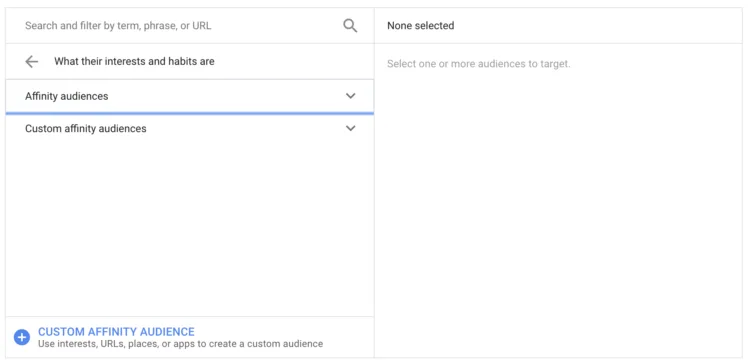Growing Your Brand With YouTube Advertising: The Comprehensive Guide


Growing Your Brand With YouTube Advertising: The Comprehensive Guide
Get The Print Version
Tired of scrolling? Download a PDF version for easier offline reading and sharing with coworkers.
A link to download the PDF will arrive in your inbox shortly.
As the second most popular search engine worldwide, YouTube is one of the most powerful platforms for businesses trying to capture customers’ attention.
With nearly two billion users logging in every month, the platform has tremendous capacity for helping brands attract new audiences and establish a loyal following.
Given how vital YouTube has become to a successful digital strategy, it’s surprising to remember that advertising on the platform started only a decade ago.
YouTube is one of the best options for creating a cost-effective advertising campaign:
Average CPV: $0.026
Average view rate: 31.9%
Average view CTR: 0.514%
History of YouTube Ads
With the debut of Participatory Ads and Brand Channels in 2006, YouTube began offering businesses the chance to reach a wider audience than ever before.
More developments quickly followed, like the launch of overlay InVideo Ads and the expansion of Homepage ad formats from one to seven.
Over the years, more and more ad options and tools have been developed to make creating advertising campaigns on the platform both easier and more customizable.
YouTube can be an profitable advertising tool if you are willing to take the plunge.
Start your YouTube journey today so you can start reaping the benefits that the platform can bring.
Benefits of Advertising on YouTube
There are many benefits to advertising on YouTube—from targeting and customization capabilities to measurability and affordability—but the most important benefit is actually the simplest: Reach.
After all, what good would a billboard do if the road it’s on doesn’t get any traffic?
Let’s walk through exactly what YouTube advertising can do for your brand.
1. Expand your digital reach.
Along with the almost two billion YouTube account holders who visit the website monthly, there is a vast, unregistered group of youtube users who contribute to the platform’s approximately five billion daily video views.
With each video view there is the potential to expose your ad to someone who could be interested in what your business offers.
The question is: how do you find them?
With YouTube Ads, the bigger the net you cast, the more potential customers you can connect with.
People who would be interested in your products will probably come from all walks of life.
Taking the time to consider the multiple different customer demographics that your ads on YouTube would serve well is the best way to capitalize on this advertising platform.
2. Find customers with advanced targeting.
Besides basic identifying information like age, gender, and geographic location, what other recognizable characteristics do your current customers have?
With YouTube Ads you have the capability to target videos by Topic, Category, and Keyword.
In doing so, you can increase the likelihood that the audience finds your ad to be relevant. Additionally, with Placement Targeting, you can identify specific YouTube pages you want your ads to appear on.
Utilizing targeting features like these make it much easier to ensure your ads get in front of the right customers at the right times.
In addition to letting businesses narrow in on their intended audience, YouTube Advertising grants a certain level of customizability that allows the advertisements to be more personalized than Search Ads.


As an added bonus, these video ads give businesses the capacity to be as creative as they’d like and let their voices be heard.
Due to the many different types of YouTube Ads (more on those later), businesses have the ability to choose the formats that best help them achieve their goals.
3. Customize ads to meet your goals.
Unlike Search and Shopping Ads, which need to follow strict guidelines in order to be eligible to run, YouTube Ads give businesses more freedom in choosing their advertising approach.
Brands can use the platform to tell stories about themselves and their customers, share valuable information, explain their products, and more.
This wide range of possibilities truly makes YouTube one of the most dynamic and flexible advertising platforms out there.
Given the platform’s advertising capabilities, it’s surprisingly affordable for businesses of all sizes.
If you’re concerned that YouTube Ads will take a large chunk out of your advertising or marketing budget, you should take a closer look at the fine details.
YouTube’s Advertising Cost
The cost will vary based on your audience targeting, your marketing goals, and your video.
According to Penna Powers, the estimated costs are:
In-Display Ads: $0.30 Average Cost-per-View (CPV).
In-Search: $0.10 Average Cost-per-View (CPV).
4. Run cost-effective campaigns.
You don’t necessarily need a fancy camera or the assistance of a creative agency to create your ads.
YouTube put together this handy guide to help businesses prepare, shoot, and edit video ads all on a smartphone.
A typical ad view generally runs between $0.05 and $0.10, which is low compared to the cost of some keywords on the Search Network, which can run for $50 per-click or more.
And not only are video views themselves relatively cheap, but, as with PPC ads, advertisers only pay when users choose to engage with the ads.
Even compared to Search ads, YouTube has an affordability advantage.
Because whereas Search ads count a quick click of a button as engagement, the TrueView ad format only counts sustained viewing as engagement.
This means you never pay for people who see your ad but quickly skip it.
It really couldn’t be easier to keep track of your budget and measure the success of your YouTube Ads.
By checking your Google Ads account, you can track views and costs, and get an idea if you’re reaching the right audience.
5. Measure your ads’ success.
Under the Analytics tab in your YouTube account you can learn more about the people who’ve viewed your ads.
Digging into this data can provide you invaluable insight into how well your ads are really doing.
For example, you can learn:
Which ads your customers are watching
How long they watch them.
At exactly what points they disengage.
You can also use the Analytics tab to help you determine which of the many ad formats are performing best.
Figuring out which types of ad makes the most sense for your business will take some trial and error.
You can also connect your YouTube account with your Google Analytics account to dive deeper into your video campaign data.
You can see, for example, the top “pages” on your YouTube channel with more in-depth metrics like bounce rate, unique pageviews, and average time on page.

In experimenting with different ad formats and approaches, you might find that one works best, but you may also find success across all ad types.
It depends completely on the nature of your business and the advertisements themselves, so keep trying new strategies to discover what works best.
Types of YouTube Ads
YouTube offers a variety of ad formats that businesses can use to keep their customers engaged:
Trueview.
Pre-Roll.
Bumper Ads.
Each of these formats has its own unique advantages and use cases.
Depending on what goal you’re trying to accomplish, you may want to use only one format or potentially combine multiple formats.
1. TrueView Ads
For some of their ads, YouTube uses a unique format called TrueView.
These ads can be shown on the Google Display Network in addition to appearing YouTube.
For Standard TrueView Ads, advertisers are only charged when a user watches at least 30 seconds of the video ad, or if the video is less than 30 seconds, they have to watch the whole thing.
In addition, you are charged for a view if the viewer engages with your ad by clicking on a link, for example.
And within TrueView Ads there are two subcategories of ads, In-Stream and Discovery.
In-Stream Ads.
TrueView In-Stream Ads are advertisements that play before, during, or after a YouTube video has played.
These are skippable ads after five seconds, but you won’t be charged if viewers who opted to skip the ad.
In-stream video ads can include call-to-actions that you can personalize to fit your message that will appear as overlaying text over the video, making them TrueView for action ads.
Google recently changed the guidelines for TrueView for Action ad formats so that cost is incurred after 10 seconds.
TrueView In-Stream Ads are generally what businesses decide to pursue when considering YouTube Ads, but they can be tricky to do right.
It is vital you keep in mind that users have the ability to skip the video after five seconds.
Make sure you include a logo or your business name somewhere in the first five seconds so that even if they do skip, you still gain a small amount of brand exposure.
In addition, don’t forget to put your logo, website, and a call-to-action at the end of the video and let it linger for a few seconds so that users have a chance to decide if they’d like to take further action.
Most importantly, make sure your ads are compelling, especially in those first five seconds.
Whereas In-Stream Ads play automatically for viewers who are trying to watch other videos, Discovery Ads are dependent on appearing both relevant and appealing to be seen.
Discovery Ads.
TrueView Discovery Ads show up on YouTube search results pages and as related videos on the right-hand sidebar.

Unlike In-Stream Ads, businesses are charged each time their Discovery Ads are clicked on, no matter how long they end up watching the video.
Discovery Ads are a great option for how-to or product demonstration videos.
If you’re worried about viewers immediately skipping In-Stream Ads and not engaging with Discovery Ads, there are other ad options that could be the solution you’re looking for.
Pre-Rolls and Bumper Ads don’t allow viewers to skip them, but they do come with some drawbacks.
2. Pre-Roll Ads
Between the two ad types that can’t be skipped, Pre-Roll Ads seem more lucrative.
These ads, which can play before, in the middle, or after a video, can be up to 20 seconds long, but are usually around 15.
A Pre-Roll Ad only play in the middle of a YouTube video if it is 10 minutes or longer.
Since 15 seconds can go by quickly, it is best to use this time wisely with a call-to-action.
It is important to note that businesses are charged per ad view, regardless of whether or not it drives viewer engagement.
But, there are some great strategies you can take to make the most of each view.
Consider breaking the fourth wall, and acknowledging the fact that users are watching an ad.
In doing so, you can seem like less of an annoyance and hopefully your ad will become more approachable.
For your Pre-Roll Ads, you should set up a call-to-action overlay to make it easier for viewers to learn more about your ad.
Since you’re already paying for the exposure, you can make your ads feel less intrusive by giving viewers the option to click through to your website if they’d like.
Additionally, you should use companion banners that run next to the video to your advantage. These banners stay after your ad runs so that viewers can finish watching their YouTube video, but still be able to take action after.
If Pre-Roll Ads don’t quite fit your style, Bumper Ads might be the quick-fix you need.
3. Bumper Ads
Similar to Pre-Roll, Bumper Ads are both non-skippable and cost businesses every time they are shown.
These ads are very short, as they can only be six seconds long, and play directly before videos on YouTube.
Because of the brief runtime, Bumper Ads are generally better suited for building brand awareness rather than promoting a product.
It isn’t recommended that you try and fit a lot of information in one of these ads, as they will come across as confusing and complicated.
But, if you’re really interested, there are alternative tactics you can take to tell a more complete story.
Make sure your ad is clear and concise, with a singular message that’s easy to understand. A lot of advertisers try to put too much into one ad and end up overstuffing it.
To counteract this, try using remarketing audiences so you can create a sequence of videos for users to watch.
In doing so, you can take a longer brand narrative and chop it up into multiple ads to tell a story.
Users that make it to the end of the sequence tend to be highly engaged and are more familiar with your brand.
Advanced strategies like this one are one way businesses make the most out of YouTube Ads.
Let’s explore some other best practices that contribute to a successful account.
YouTube Advertising Best Practices
There’s no magic formula for a successful YouTube ad campaign.
But there are some tried and true strategies that have worked for other businesses in the past.
Implementing a few of these best practices should result in improved ad performances across the board.
1. Create a dynamic YouTube channel.
It all starts with your YouTube Channel.
As a content hub for your business, your channel should create an experience of your brand that goes beyond advertising.
Product demonstration videos, product review videos, videos tackling FAQ’s from your site, and behind-the-scenes videos are just a few examples of the types of content you can host on your channel.
In addition to deepening consumers’ engagement with your brand after they’re first exposed to it through your ads, your channel also serves to reinforce brand loyalty among previous purchasers who find it through organic search.
To ensure your channel is creating the best possible impression of your business, make sure it is well organized and has genuinely useful information about your business as well as appealing imagery.
2. Utilize Remarketing to re-engage with customers.
You can remarket to YouTube Ads viewers (or even channel visitors) with either additional YouTube Ads or Display Ads.
These video ads don’t have to be a single touch point you complete then you hope the best for.
Instead, you can follow up and re-engage with users on your remarketing list to drive them to your website.
These people who are already familiar with your brand and products are more likely to re-engage with your ads than those who haven’t come across your YouTube content.
The people you are remarketing to may have watched a few of your product demonstration videos, looking for the right product for them.
By giving them a reminder of your business through remarketing, it may be all the push they need to go to your site and make a purchase.
3. Never stop looking for ways to optimize performance.
Managing a successful account requires continuous attention.
When looking for ways to increase performance, always optimize your targeting before optimizing the ad content.
Refining your ad content before targeting is a waste of time, as you could be making changes no one will see.
On that same note, by creating video viewer audiences you can then layer on to search campaigns.
Always look for additional audience layers that you can bid up on using search or display campaigns.
By testing multiple audiences or targeting parameters, you can figure out what drives the most engagement.
Also consider testing multiple ad formats as well.
For example, maybe your original ad did better with men, so you could create a new ad either focused even more so on men, or alternatively create a new one to better target women.
4. Turn to Google for help.
If you are working with an account manager at Google, you should consider doing a YouTube Brand Lift Study.
YouTube and Google provide complementary brand lift studies in which they take your audience, split it in half (creating a test and control group), exposing your video ads to one half and not the other.
They then directly measure the lift in brand searches and ad recall between the two audiences so that advertisers have hard numbers to demonstrate what kind of lift the video campaigns are generating outside of what’s easily trackable.
The study is free, advertisers just have to pay for the advertising cost.
5. Keep tabs on the right metrics to determine success.
Instead of relying on youtube views or clicks to properly evaluate ad performance, you should be focusing on lift.
You shouldn’t treat YouTube Ads and Search Ads the same way, especially since people online don’t.
Users don’t come to YouTube to watch a video, see an ad, and then immediately click off to go buy something.
Instead, they absorb the ad message, and then if compelled enough, will likely do a follow up search later.
To determine ad success you should first look at views and view rate to make sure that people are watching the video.
Then look at earned actions, or what users did after watching the video.
Did they watch other videos?
Did they subscribe, or share, or like the video?
After that you should look to see if direct traffic to your website or brand search volume on Google has increased.
Google and YouTube have definitely taken strides to make video ads more direct response focused (like TrueView for action), but user behavior is what it is, and the bulk of users are not going to take trackable immediate action.
If you go in with that mindset, you’ll likely end up frustrated and assume that video content isn’t for you, but it may very well have been working, just not in the way that you expect.
As you can tell, YouTube Ads requires a more hands-on approach than its Search and Display counterparts, but that time spent will results in better performing ads.
Having a well structured and planned out YouTube strategy will elevate your brand and help you promote your products.
A few businesses have become masters of this valuable platform and it is worthwhile to take a look at the approaches they took to get where they are.
YouTube Advertising Examples: Ecommerce Businesses that Excel on YouTube
While Google Shopping and Search Ads help potential customers find products online, many turn to YouTube to help them decide what they should be buying.
The content you post on your YouTube page could very well be the deciding factor between whether or not someone chooses to purchase one of your products over a competitor’s.
1. Skullcandy.
One business that takes their YouTube content very seriously is Skullcandy.
The headphone and speaker company, which has been in business since 2003, does a great job maintaining a strong brand voice throughout their videos.
The company, which targets an outdoor sports demographic (think surfers, snowboarders, skateboarders, etc), produces videos that are high-energy and appealing to a younger audience.
The way the content is organized in orderly playlists makes Skullcandy’s page very user-friendly.
And by grouping together product demonstrations and customer reviews by category, Skullcandy’s YouTube profile couldn’t be easier to navigate.
In addition to their product reviews and other informational videos, Skullcandy produces other, original content to keep their audience engaged.
For example, their podcast “You Feel Me?” and concert series “Now Feel This” offer viewers exclusive media they can’t find anywhere else while staying on-brand with their messaging.
As a headphone and earbud business, the link between their products and their YouTube content is apparent.
Skullcandy’s approach to their YouTube content isn’t that outside of the box.
All of their decisions have made sense, and work towards building a community around their brand, which can be quite lucrative.
Developing your message so that you start to accumulate repeat customers that have brand loyalty towards your business and your products is a great way to take advantage of all YouTube has to offer.
2. Sun Bum.
The sunscreen, hair care, and lip balm company Sun Bum is another great example of how brands can produce engaging content to create an eager fanbase.
The company has multiple vignette series that make the brand approachable and fall easily in line with the laid-back, friendly aesthetic of the brand.
They post multiple videos a week, covering a variety of topics from office culture highlights to fabric dyeing tutorials.
There’s nothing better than sun and surf.
Sun Bum hits the road with their self-named Bum Rush tour, where team members travel along the coasts in an eye-catching bus, visiting local talent and giving these rising stars an opportunity to showcase their skills and win a cash price.
Another approach Sun Bum takes to their YouTube channel is their Sonny’s Porch series, giving traveling musicians a respite from tour (and an opportunity for a quick video reel).
Here they’re capitalizing on the overlap between sunscreen and music fans.
The approach is simple and innovative: fans of the bands, in search for new videos of the groups, will discover the exclusive Sonny’s Porch performance, and the brand awareness snowballs from there.
Cultivating a community of like-minded individuals around their brand may have been the smartest decision Sun Bum made when planning out their YouTube strategy.
These viewers can do some of the heavy lifting for the brand, since they are encouraged to share the content and discuss the video topics further in the comments section.
The thumbnails and titles for Sun Bum’s videos are highly compelling and the topics change and adapt over time to fit in with seasonal trends.
Skullcandy and Sun Bum are just two examples of businesses that are utilizing YouTube to sell their products and grow brand awareness.
Even though they take different approaches, both companies prove just how effective good content can be.
Executive Summary
With the potential to get your ads in front of the millions of people who visit YouTube every month, this platform isn’t something you should take for granted.
Setting up custom targeting alongside personalizing your message ensures that the right audience is exposed to your ads.
The fact that YouTube makes it easy to measure the success of your ads while remaining an affordable advertising option makes it a no-brainer to invest in.
Among TrueView, Pre-Roll, and Bumper Ads there is bound to be a viable option for any business.
With In-Stream Ads, businesses have the capability to create longer ads for interested viewers to watch that can showcase the benefits of their products.
Discovery Ads, on the other hand, must rely on having compelling titles and descriptions to attract views.
Pre-Roll and Bumper Ads have the advantage of being unskippable, but must make the most of their restricted runtimes.
No matter the ad format you choose, you must have a solid strategy supporting it.
There are many reliable best practices businesses have been utilizing to make the most out of their YouTube Ads endeavors.
By creating great page content, you are able to better support your advertisements and possibly build a loyal following.
Remarketing to ad viewers and employing other strategic tactics can help you continue to grow your audience as time goes by.
And if you feel you aren’t getting the results you sought after, double check that you are monitoring the right metrics before reaching out to Google for assistance.
Advertising with YouTube can expose your brand and products to people who would have never known about your business otherwise.
Like any other advertising decision, YouTube Ads does require constant updating and optimizing to achieve the best results.
But, if done correctly, your investment can prove itself to be one of the best business decisions you’ve ever made.

As a founding member of the YouTube Guru Program, Brandon has had the pleasure of attending invite-only YouTube hosted seminars and trainings to gain a unique perspective on how businesses can best leverage the YouTube platform to grow their brand.


